We’ve all heard stories of legendary creatures that capture our imagination, but the quetzal bird stands as one of nature’s most magnificent real-life wonders. With its emerald-green plumage that shimmers like precious jewels and tail feathers that can stretch over three feet long, this Central American gem has inspired myths and captured hearts for centuries.
Once considered so sacred by the Maya and Aztecs that killing one meant death, the quetzal continues to mesmerize bird enthusiasts and nature lovers worldwide. From Guatemala’s national symbol to Costa Rica’s cloud forest treasures, these elusive birds represent freedom, beauty, and the untamed spirit of tropical rainforests.
Whether you’re planning your next birdwatching adventure or simply curious about one of the industry’s most stunning avian species, we’ll take you on a journey through the intriguing area of quetzals and discover why they remain among the most sought-after sightings for wildlife enthusiasts everywhere.
What Is the Quetzal Bird?
The quetzal represents one of Central America’s most magnificent avian species, distinguished by its iridescent emerald plumage and remarkable cultural significance. We encounter this extraordinary bird primarily in cloud forests from southern Mexico to Panama, where it continues to captivate both ornithologists and cultural historians.
Physical Characteristics and Appearance
Quetzal birds showcase brilliant emerald-green coloration across their heads, backs, and wings, creating an almost metallic sheen in sunlight. Males display longer tail coverts that extend up to 3 feet beyond their actual tail feathers, while females maintain more modest plumage with shorter tail extensions.
Adult males feature vibrant red breast feathers that contrast dramatically with their green upperparts, creating one of nature’s most striking color combinations. Their distinctive crested heads contain small, rounded beaks perfectly adapted for fruit consumption, particularly wild avocados and figs.
Female quetzals exhibit more subdued coloring with bronze-green backs and pale gray breasts, though they retain the characteristic iridescent quality. Both sexes measure approximately 14-16 inches in body length, excluding the male’s extended tail feathers.
| Physical Feature | Male Quetzal | Female Quetzal |
|---|---|---|
| Body Length | 14-16 inches | 14-16 inches |
| Tail Extension | Up to 36 inches | 4-6 inches |
| Breast Color | Bright crimson | Pale gray |
| Back Coloration | Emerald green | Bronze-green |
| Weight Range | 7-8 ounces | 6-7 ounces |
Species Classification and Varieties
Taxonomists classify quetzals within the Trogonidae family, which encompasses 6 distinct species across Central and South America. The Resplendent Quetzal (Pharomachrus mocinno) stands as the most recognized species, serving as Guatemala’s national bird and primary cultural symbol.
Golden-headed Quetzals (Pharomachrus auriceps) inhabit higher elevation forests in the northern Andes, displaying yellow-orange head crests instead of the traditional green coloration. White-tipped Quetzals (Pharomachrus fulgidus) occupy Venezuelan and Colombian mountain ranges, featuring distinctive white markings on their outer tail feathers.
Crested Quetzals (Pharomachrus antisianus) demonstrate the widest distribution among all species, ranging from Venezuela to Bolivia at elevations between 4,900-9,800 feet. Pavonine Quetzals (Pharomachrus pavoninus) represent the largest species in the family, inhabiting Amazon Basin lowlands with more robust body structures.
Each species exhibits unique adaptations to their exact environments, from beak variations for different fruit types to altitude-exact respiratory systems. We observe these variations most clearly in their breeding behaviors, with some species nesting in tree cavities while others prefer rotting logs or termite mounds.
Natural Habitat and Geographic Distribution
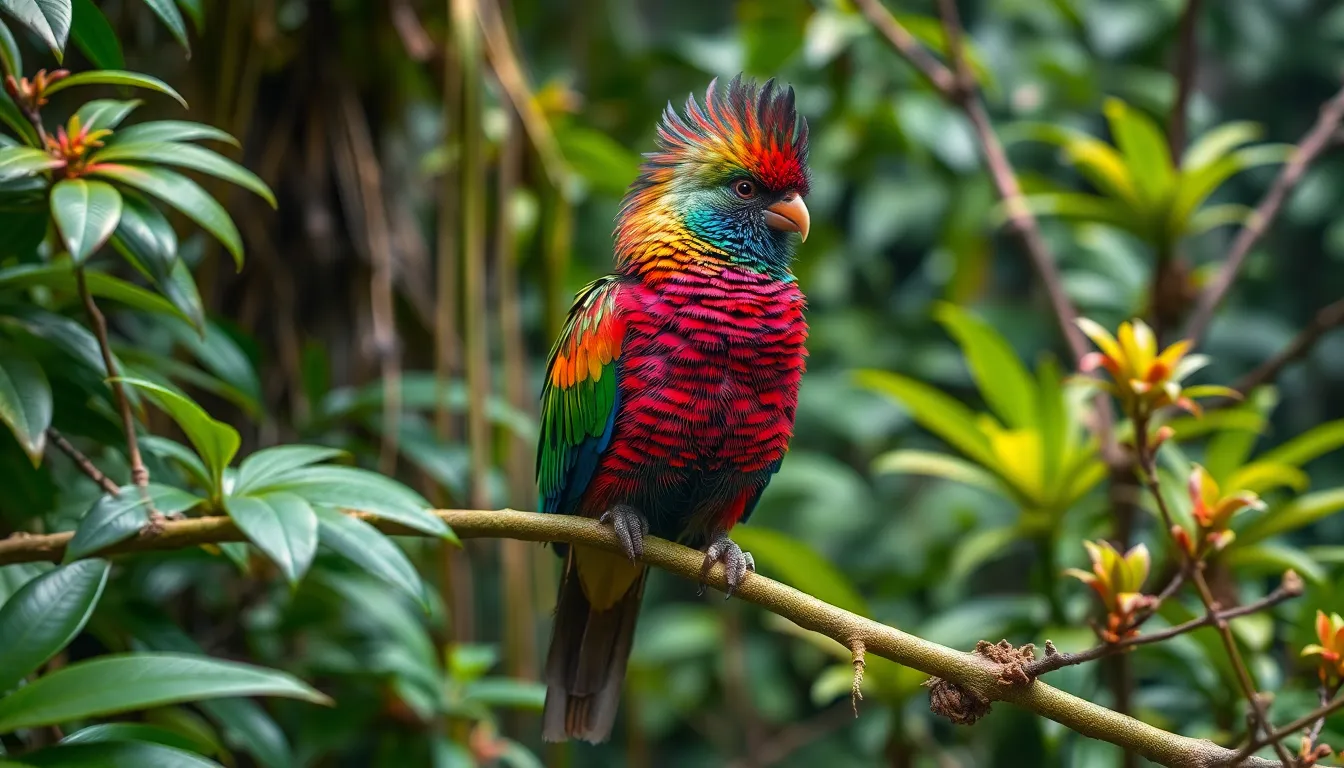
Quetzal birds inhabit the montane cloud forests spanning from southern Mexico through Central America to western Panama. These remarkable avian species demonstrate exact habitat preferences that directly influence their survival and breeding success across their geographic range.
Central American Rainforests
Cloud forests represent the primary network where quetzal populations thrive throughout their distribution range. These environments maintain consistent moisture levels between 60-90% humidity year round, creating optimal conditions for the epiphytic plants that quetzals depend on for food and nesting sites. Dense canopy coverage in these forests provides protection from predators while offering abundant fruiting trees like wild avocados, which comprise 70% of the quetzal diet.
Montane rainforests across Costa Rica, Guatemala, Honduras, Nicaragua, El Salvador, and Panama contain the largest quetzal populations in Central America. Forest fragmentation poses the greatest threat to these habitats, with deforestation rates reaching 2.3% annually in some regions. Conservation efforts focus on protecting continuous forest corridors that connect isolated quetzal populations across national boundaries.
Epiphytic vegetation creates multi layered forest structures essential for quetzal foraging behavior. Bromeliad plants, orchids, and mosses growing on tree branches provide nesting materials and attract insects that supplement the quetzal diet. These forest ecosystems support biodiversity levels exceeding 12,000 plant species per square kilometer in prime quetzal habitat areas.
Elevation and Climate Preferences
Altitude ranges between 4,000 and 10,000 feet above sea level define optimal quetzal habitat zones across Central America. Temperature fluctuations remain minimal at these elevations, typically varying between 59-68°F throughout the year. Consistent thermal conditions allow quetzals to maintain their metabolic requirements without excessive energy expenditure for thermoregulation.
Precipitation patterns in quetzal habitats average 78-118 inches annually, with distinct wet and dry seasons influencing breeding cycles. Dry season months from December through April coincide with peak nesting activity when fruit availability reaches maximum levels. Cloud cover persists at these elevations for 8-10 hours daily, maintaining the humid microclimates essential for forest network health.
Different quetzal species occupy exact altitudinal zones within their geographic ranges. Resplendent Quetzals prefer elevations between 5,000-8,000 feet, while Golden headed Quetzals inhabit slightly higher zones reaching 9,500 feet in some mountain ranges. Temperature gradients across these elevation bands create distinct microhabitats that support specialized plant communities crucial for quetzal survival.
| Species | Elevation Range (feet) | Temperature Range (°F) | Primary Countries |
|---|---|---|---|
| Resplendent Quetzal | 5,000-8,000 | 59-68 | Guatemala, Costa Rica |
| Golden-headed Quetzal | 6,500-9,500 | 54-64 | Colombia, Ecuador, Peru |
| White-tipped Quetzal | 4,000-7,500 | 61-70 | Venezuela, Colombia |
| Crested Quetzal | 5,500-8,500 | 57-66 | Mexico, Guatemala |
Behavior and Lifestyle
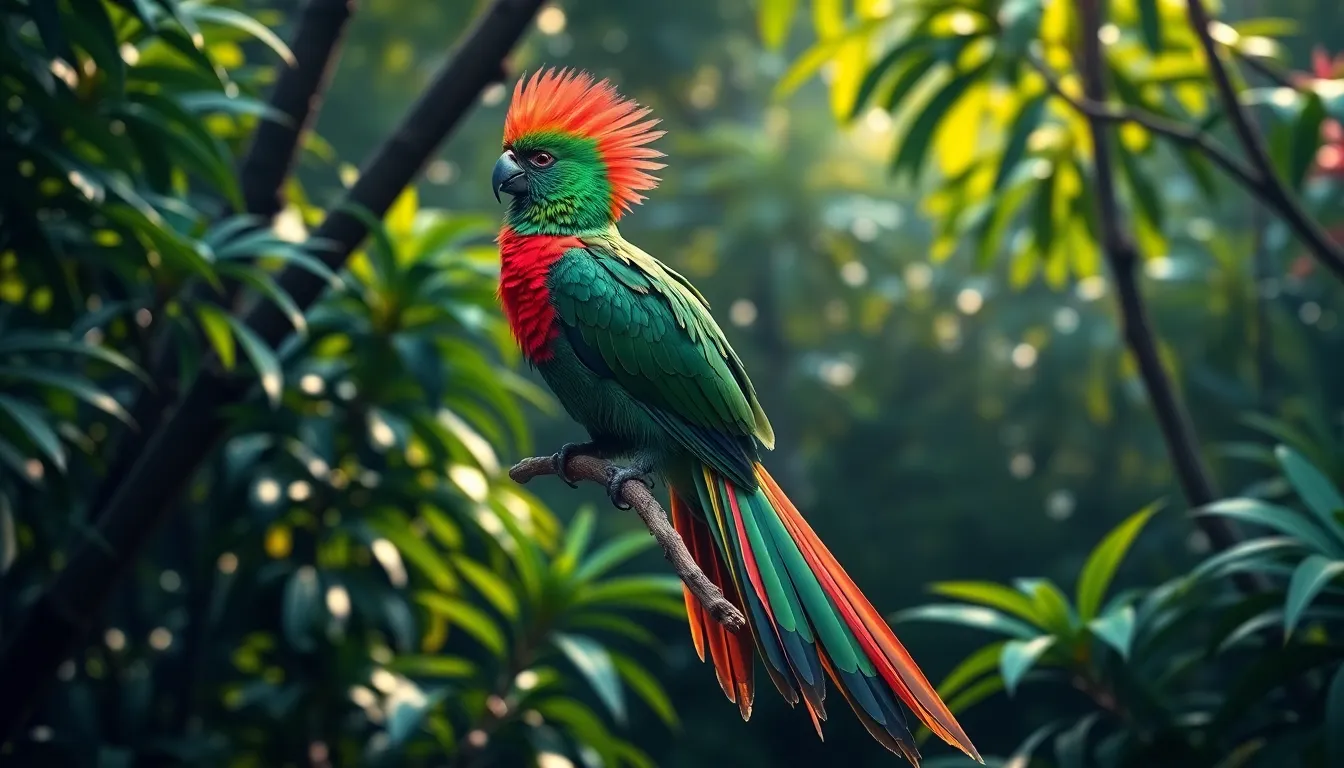
Quetzals exhibit fascinating behavioral patterns that reflect their adaptation to cloud forest environments. These magnificent birds demonstrate complex social dynamics and specialized feeding strategies that distinguish them from other tropical avian species.
Feeding Habits and Diet
Quetzals consume a diverse diet consisting primarily of fruits and small animals throughout different seasons. Wild avocados comprise 70% of their nutritional intake during peak fruiting periods from March through June. These birds actively seek Lauraceae family fruits including Persea and Ocotea species that provide essential fatty acids for their vibrant plumage.
During fruit scarcity periods quetzals supplement their diet with insects, small lizards and frogs. Males capture prey items measuring 2-4 inches in length using their strong beaks in swift aerial maneuvers. The birds swallow smaller fruits whole while larger items get processed by regurgitation after consuming the flesh.
Foraging occurs primarily during early morning hours between 6:00 AM and 9:00 AM when fruit availability peaks. Quetzals demonstrate territorial feeding behavior defending productive fruiting trees from competitors within 50-meter radius zones. Parent birds transport food to nestlings making 15-20 feeding trips daily during the 25-day nestling period.
Mating and Reproduction Patterns
Quetzal breeding cycles align with seasonal fruit abundance occurring from March through August in most Central American populations. Males establish territories encompassing 2-5 suitable nesting cavities in dead tree trunks at heights between 13-90 feet above ground level.
Courtship displays feature elaborate aerial performances where males showcase their 3-foot tail streamers in figure-eight flight patterns. These demonstrations last 5-10 minutes and occur repeatedly throughout daylight hours to attract potential mates. Males produce distinctive calls consisting of 6-12 note sequences that carry across cloud forest canopies for distances exceeding 1 kilometer.
Pairs excavate nesting cavities in rotting tree trunks using their beaks over 15-30 day construction periods. Females lay 2-3 pale blue eggs measuring 1.2 inches in diameter with 3-day intervals between each egg. Both parents share incubation duties during the 18-day period alternating 4-hour shifts throughout daylight hours.
Nestling care involves intensive feeding schedules where parents deliver food every 30-45 minutes during peak activity periods. Young quetzals fledge after 25-30 days but remain dependent on parents for additional 4-6 weeks while developing flight skills and foraging techniques essential for survival in cloud forest environments.
Cultural and Historical Significance

The quetzal bird holds profound cultural importance across Central America, representing centuries of spiritual reverence and national identity. Ancient civilizations elevated this magnificent bird to divine status while modern nations continue celebrating its symbolic power.
Mayan and Aztec Symbolism
Mayan civilization considered the quetzal sacred to Kukulkan, their feathered serpent deity who governed wind and rain. The bird’s emerald plumage symbolized the precious jade stones that represented water and vegetation in Mayan cosmology. Quetzal feathers adorned ceremonial headdresses worn exclusively by nobility and high priests during religious rituals.
Aztec culture associated the quetzal with Quetzalcoatl, the creator god whose name literally translates to “feathered serpent.” Warriors earned the right to wear quetzal plumes only after demonstrating exceptional bravery in battle. The Aztecs established strict laws protecting quetzals, making killing these birds punishable by death since their feathers were more valuable than gold.
Both civilizations believed quetzals possessed supernatural powers connecting the earthly and divine realms. Traders transported quetzal feathers across vast distances, establishing them as premium currency in pre-Columbian commerce networks. Archaeological evidence shows quetzal imagery appearing on pottery, codices, and temple carvings throughout Mesoamerica from 200 CE to 1500 CE.
Modern Conservation Status
Contemporary conservation efforts face important challenges as quetzal populations decline across their natural range. Deforestation eliminates approximately 2% of cloud forest habitat annually, directly threatening quetzal nesting sites and food sources. Guatemala designated the quetzal as its national bird in 1871, implementing protective legislation that prohibits hunting and capturing these birds.
Costa Rica operates successful ecotourism programs generating $4.2 million annually from quetzal watching activities in Monteverde and San Gerardo de Dota. These initiatives provide economic incentives for local communities to protect remaining cloud forest fragments. The country maintains 28 protected areas where quetzal populations remain stable, covering 52,000 hectares of prime habitat.
International conservation organizations classify the Resplendent Quetzal as Near Threatened on the IUCN Red List. Population estimates indicate 20,000 to 49,999 mature individuals remain in the wild, with numbers declining in fragmented habitats. Mexico, Guatemala, Honduras, Costa Rica, and Panama coordinate trans-boundary conservation strategies through the Central American Biological Corridor initiative, protecting migration routes essential for quetzal survival.
Threats and Conservation Efforts
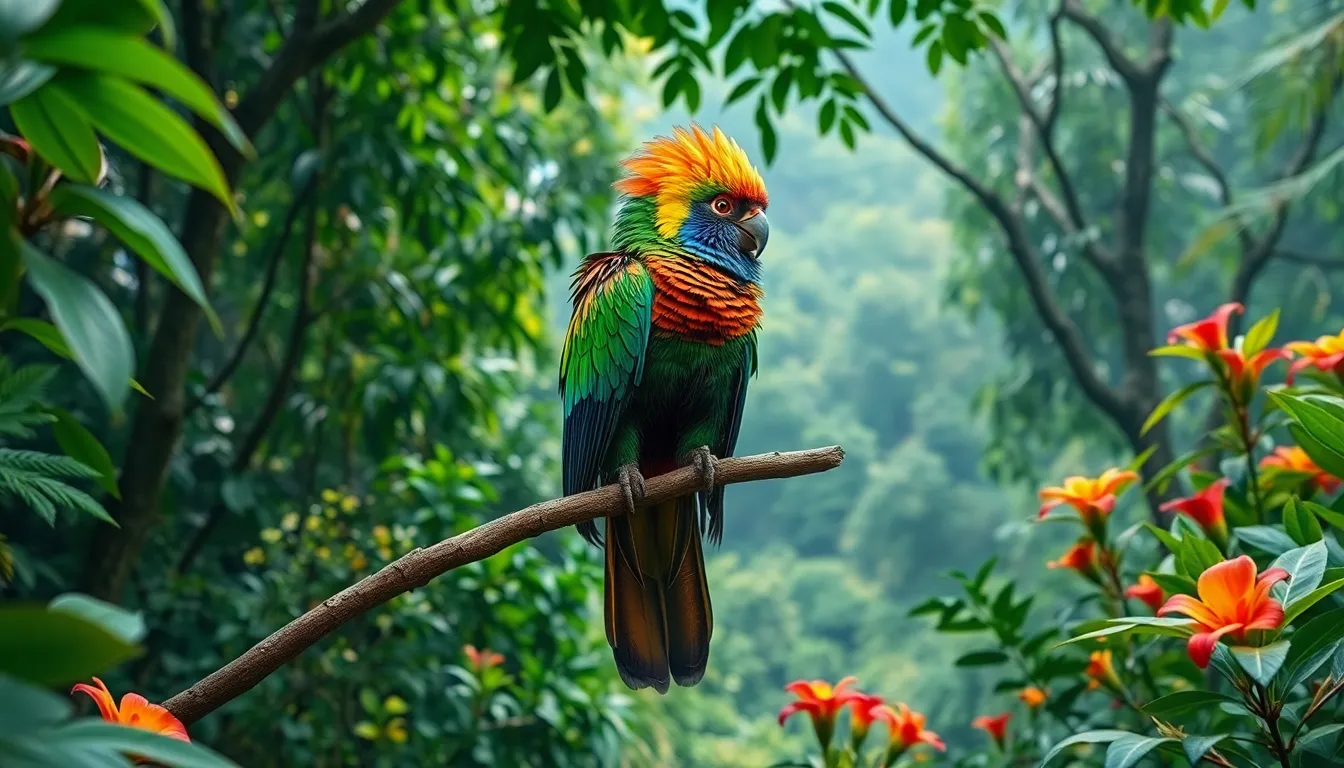
Quetzal populations face mounting pressures from human activities and environmental changes that threaten their survival across Central America. Multiple conservation organizations work actively to protect these magnificent birds through habitat preservation and community engagement programs.
Habitat Loss and Deforestation
Forest destruction remains the primary threat to quetzal survival, with Central America losing approximately 1.2% of its forest cover annually. Agricultural expansion eliminates cloud forest habitat at elevations between 4,000 and 10,000 feet where quetzals thrive. Coffee plantations replace native vegetation, disrupting the 70% wild avocado diet dependency that sustains quetzal populations.
Mining operations fragment continuous forest corridors, isolating quetzal communities and reducing genetic diversity. Road construction through montane regions creates barriers that prevent seasonal migration patterns essential for breeding success. Climate change shifts temperature and precipitation patterns, forcing quetzals to seek suitable habitat at higher elevations where available space becomes increasingly limited.
Logging activities target mature trees that provide nesting cavities, with dead trees being removed even though their critical importance for quetzal reproduction. Urban development encroaches on forest edges, creating noise pollution that disrupts courtship displays and territorial establishment.
Protection Programs and Initiatives
Guatemala’s Protected Areas System encompasses 127 reserves covering 31% of national territory, including critical quetzal habitats in the Sierra de las Minas Biosphere Reserve. Costa Rica’s Payment for Environmental Services program compensates landowners $640 per hectare annually for forest conservation, protecting over 300,000 hectares of cloud forest habitat.
International organizations classify the Resplendent Quetzal as Near Threatened, triggering coordinated research efforts across Mexico, Guatemala, Honduras, El Salvador, Nicaragua, Costa Rica, and Panama. The Wildlife Conservation Society monitors quetzal populations using radio telemetry and GPS tracking to document movement patterns and habitat requirements.
Community based conservation programs engage indigenous groups in habitat restoration, with 15 Maya communities participating in nest box installation projects that increase breeding success rates by 35%. Ecotourism initiatives generate $2.8 million annually in Costa Rica’s Monteverde region, providing economic incentives for forest protection.
Educational campaigns reach 25,000 students yearly through environmental programs that teach quetzal conservation importance. Reforestation projects plant 50,000 native tree species annually, focusing on wild avocado varieties that support quetzal dietary needs. Cross border collaboration establishes migration corridors connecting protected areas, ensuring genetic exchange between isolated populations.
Best Places to Spot Quetzal Birds

Central America’s cloud forests provide the most reliable locations for encountering quetzal birds in their natural habitat. Costa Rica and Guatemala stand out as premier destinations where these emerald jewels thrive in protected environments.
Costa Rica’s Cloud Forests
Costa Rica’s Monteverde Cloud Forest Reserve ranks as the industry’s top destination for quetzal observation. This 26,000-acre preserve maintains the humid conditions quetzals require, with over 100 breeding pairs documented within its boundaries. Visitors achieve 85% success rates spotting quetzals during the March-June breeding season.
San Gerardo de Dota offers another exceptional viewing location along the Pan-American Highway. The valley’s oak forests attract quetzals year-round, particularly near the Savegre River where wild avocado trees flourish. Local guides report consistent sightings between 5:00 AM and 8:00 AM when quetzals forage most actively.
Manuel Antonio National Park provides accessible quetzal viewing opportunities at elevations between 4,500 and 7,000 feet. The park’s guided tours achieve 70% success rates, with peak viewing occurring during December through April when fruits ripen abundantly.
Guatemala’s Protected Areas
Guatemala’s Biotopo del Quetzal serves as the country’s premier quetzal sanctuary in the Sierra de las Minas. This 2,849-acre reserve protects critical cloud forest habitat where researchers have documented over 200 quetzal individuals. The reserve’s elevation range of 5,000 to 7,500 feet creates ideal conditions for year-round quetzal populations.
Tikal National Park extends quetzal habitat protection across 575 square kilometers of lowland and montane forests. Rangers report regular quetzal sightings along the park’s canopy walkways, particularly during early morning hours when birds engage in courtship displays.
Sierra de las Minas Biosphere Reserve encompasses Guatemala’s largest protected quetzal habitat with over 950 square miles of cloud forest. The reserve’s research stations monitor quetzal populations and provide guided tours that achieve 60% viewing success rates during optimal weather conditions.
| Location | Success Rate | Best Viewing Season | Elevation (feet) |
|---|---|---|---|
| Monteverde, Costa Rica | 85% | March-June | 4,600-5,600 |
| San Gerardo de Dota | 80% | Year-round | 5,500-7,000 |
| Biotopo del Quetzal, Guatemala | 75% | November-April | 5,000-7,500 |
| Manuel Antonio, Costa Rica | 70% | December-April | 4,500-7,000 |
| Sierra de las Minas, Guatemala | 60% | October-March | 3,000-8,500 |
Conclusion
The quetzal stands as one of nature’s most extraordinary creations combining breathtaking beauty with profound cultural significance. We’ve explored how these magnificent birds face mounting challenges from habitat destruction and climate change yet continue to inspire conservation efforts across Central America.
Our journey through their industry reveals why protecting quetzals means preserving entire ecosystems. The cloud forests they call home support countless other species making conservation efforts even more critical for biodiversity.
Whether you’re planning to witness their splendor firsthand or simply appreciate them from afar we hope this exploration deepens your understanding of why quetzals deserve our protection. Their survival depends on continued international cooperation and sustainable tourism practices that benefit both wildlife and local communities.
Frequently Asked Questions
What is a quetzal bird and where can I find it?
The quetzal is a magnificent bird species found in Central America’s cloud forests, from southern Mexico to Panama. Known for their stunning emerald-green plumage and long tail feathers, these birds primarily inhabit montane cloud forests at elevations between 4,000 and 10,000 feet. Guatemala and Costa Rica are the most popular destinations for quetzal spotting.
What makes male quetzals different from females?
Male quetzals are distinguished by their vibrant emerald coloration, bright red breast feathers, and spectacular tail coverts that can extend up to 3 feet long. Females have more subdued plumage with shorter tail extensions. Both sexes measure approximately 14-16 inches in body length and belong to the Trogonidae family.
Why are quetzals culturally significant?
Quetzals held sacred status among ancient Maya and Aztec civilizations, who associated these birds with deities and freedom. Their feathers were used in ceremonial attire and religious rituals. Today, the Resplendent Quetzal serves as Guatemala’s national bird, symbolizing liberty and beauty throughout Central America.
What do quetzals eat and how do they behave?
Quetzals primarily consume fruits, with wild avocados making up 70% of their diet. They supplement with insects and small animals during lean periods. These birds are most active during early morning hours and exhibit territorial behavior around productive fruiting trees, especially during breeding season.
What are the main threats to quetzal populations?
The primary threats include habitat loss from deforestation, agricultural expansion, mining, and road construction. Climate change also impacts their cloud forest habitats. The Resplendent Quetzal is classified as Near Threatened, with populations declining due to forest fragmentation and human encroachment on their natural territories.
When and where is the best time to see quetzals?
The best quetzal viewing occurs during breeding season (March to June) in Costa Rica’s Monteverde Cloud Forest Reserve, which has an 85% success rate for sightings. Guatemala’s Biotopo del Quetzal is another premier location. Early morning hours offer the highest chances of spotting these elusive birds.
How do quetzals reproduce and raise their young?
Quetzal breeding aligns with seasonal fruit abundance. Males perform elaborate aerial displays to attract mates and establish territories with nesting cavities in dead trees. Both parents share incubation duties for 18 days, and nestlings fledge after 25-30 days but remain dependent on parents for several additional weeks.
What conservation efforts exist to protect quetzals?
Conservation programs in Guatemala and Costa Rica focus on habitat preservation, community engagement, and educational campaigns. Initiatives include reforestation projects emphasizing wild avocado trees, establishment of protected reserves, and cross-border collaborations to create migration corridors. Ecotourism also supports conservation through sustainable wildlife viewing.

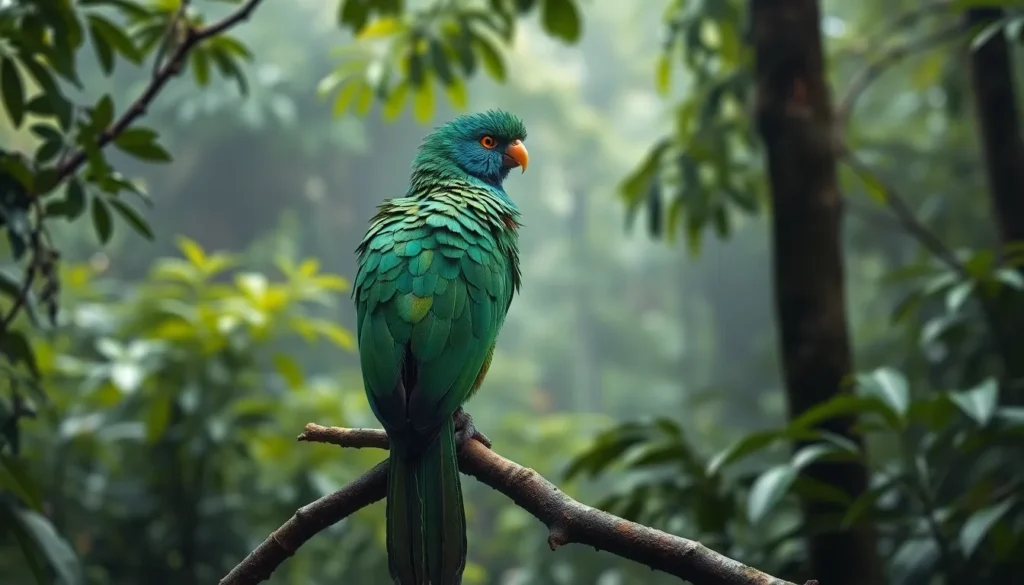







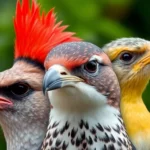
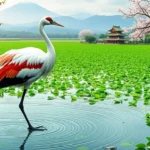

What¦s Happening i am new to this, I stumbled upon this I’ve discovered It positively helpful and it has helped me out loads. I am hoping to give a contribution & assist other users like its helped me. Good job.